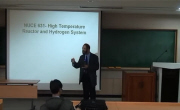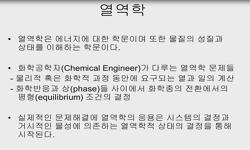Moxibustion therapy chiefly utilizes heat generated by the combustion of moxa. Therefore, understanding the thermal properties of moxibustion is essential when studying the mechanisms involved in moxibustion therapy. Therefore, we measured temperature...
http://chineseinput.net/에서 pinyin(병음)방식으로 중국어를 변환할 수 있습니다.
변환된 중국어를 복사하여 사용하시면 됩니다.
- 中文 을 입력하시려면 zhongwen을 입력하시고 space를누르시면됩니다.
- 北京 을 입력하시려면 beijing을 입력하시고 space를 누르시면 됩니다.
https://www.riss.kr/link?id=A105876447
-
저자
Seung-Ho Yi (Kyung Hee University)
- 발행기관
- 학술지명
- 권호사항
-
발행연도
2009
-
작성언어
English
- 주제어
-
등재정보
KCI등재후보,SCOPUS,ESCI
-
자료형태
학술저널
-
수록면
273-279(7쪽)
-
KCI 피인용횟수
9
- 제공처
-
0
상세조회 -
0
다운로드
부가정보
다국어 초록 (Multilingual Abstract)
Moxibustion therapy chiefly utilizes heat generated by the combustion of moxa.
Therefore, understanding the thermal properties of moxibustion is essential when
studying the mechanisms involved in moxibustion therapy. Therefore, we measured
temperatures of direct and indirect moxibustion. For indirect moxibustion,
moxibustion on garlic was used. To determine the influence of the environment on
moxibustion, we applied airflow of 0.0−0.8 m/s. An increase in the airflow caused
a concomitant increase in the maximum temperature of direct moxibustion, from
160 to 300℃ and the time duration was reduced by half. However, the maximum
temperature of indirect moxibustion demonstrated the opposite effect, with the
temperature decreasing from 45 to 40℃. This is attributed to the upstream airflow,
which indicates the importance of the air inside moxa. For indirect moxibustion
using garlic slices of different thicknesses, we found the optimum condition for the
buffer layer of a garlic slice. The maximum number of consecutive moxibustions
using one garlic slice was three. These results are consistent with traditional methods.
This observation illustrates that the importance of garlic slices in modulating
the combustion heat and proper thermal stimulus to the patient.
다국어 초록 (Multilingual Abstract)
Moxibustion therapy chiefly utilizes heat generated by the combustion of moxa. Therefore, understanding the thermal properties of moxibustion is essential when studying the mechanisms involved in moxibustion therapy. Therefore, we measured temperat...
Moxibustion therapy chiefly utilizes heat generated by the combustion of moxa.
Therefore, understanding the thermal properties of moxibustion is essential when
studying the mechanisms involved in moxibustion therapy. Therefore, we measured
temperatures of direct and indirect moxibustion. For indirect moxibustion,
moxibustion on garlic was used. To determine the influence of the environment on
moxibustion, we applied airflow of 0.0−0.8 m/s. An increase in the airflow caused
a concomitant increase in the maximum temperature of direct moxibustion, from
160 to 300℃ and the time duration was reduced by half. However, the maximum
temperature of indirect moxibustion demonstrated the opposite effect, with the
temperature decreasing from 45 to 40℃. This is attributed to the upstream airflow,
which indicates the importance of the air inside moxa. For indirect moxibustion
using garlic slices of different thicknesses, we found the optimum condition for the
buffer layer of a garlic slice. The maximum number of consecutive moxibustions
using one garlic slice was three. These results are consistent with traditional methods.
This observation illustrates that the importance of garlic slices in modulating
the combustion heat and proper thermal stimulus to the patient.
참고문헌 (Reference)
1 Kim H, "Warm needle acupuncture at Pungsi (GB31) has an enhanced analgesic effect on formalin-induced pain in rats" 78 : 164-169, 2009
2 Schepers RJ, "Thermoreceptors and thermosensitive afferents" 33 : 205-212, 2009
3 Chiba A, "Thermal and antiradical properties of indirect moxibustion" 25 : 281-287, 1997
4 Greenberg RS, "The effects of hot packs and exercise on local blood flow" 52 : 273-278, 1972
5 Hong W, "Research on the Measuring and Duplication Techniques of Curve of the Moxibustion in Traditional Chinese Medicine" 4267-4270, 2006
6 Kobayashi K, "Organic components of moxa" 16 : 179-185, 1988
7 Petrofsky JS, "Heat transfer to deep tissue: the effect of body fat and heating modality" 33 : 337-348, 2009
8 Chiba A, "Effect of indirect moxibustion on mouse skin" 25 : 143-151, 1997
9 "Dongbang Acupuncture Inc"
10 Touchberry C, "Diathermy treatment increases heat shock protein expression in female, but not male skeletal muscle" 102 : 319-323, 2008
1 Kim H, "Warm needle acupuncture at Pungsi (GB31) has an enhanced analgesic effect on formalin-induced pain in rats" 78 : 164-169, 2009
2 Schepers RJ, "Thermoreceptors and thermosensitive afferents" 33 : 205-212, 2009
3 Chiba A, "Thermal and antiradical properties of indirect moxibustion" 25 : 281-287, 1997
4 Greenberg RS, "The effects of hot packs and exercise on local blood flow" 52 : 273-278, 1972
5 Hong W, "Research on the Measuring and Duplication Techniques of Curve of the Moxibustion in Traditional Chinese Medicine" 4267-4270, 2006
6 Kobayashi K, "Organic components of moxa" 16 : 179-185, 1988
7 Petrofsky JS, "Heat transfer to deep tissue: the effect of body fat and heating modality" 33 : 337-348, 2009
8 Chiba A, "Effect of indirect moxibustion on mouse skin" 25 : 143-151, 1997
9 "Dongbang Acupuncture Inc"
10 Touchberry C, "Diathermy treatment increases heat shock protein expression in female, but not male skeletal muscle" 102 : 319-323, 2008
11 Sakagami H, "Cytotoxicity and radical modulating activity of moxa smoke" 19 : 391-397, 2005
12 Aung S, "Clinical introduction to medical acupuncture" Medical Publishers 164-, 2007
13 Shen X, "An infrared radiation study of the biophysical characteristics of traditional moxibustion" 14 : 213-219, 2006
14 Yamashita H, "Adverse events in acupuncture and moxibustion treatment: a six-year survey at a national clinic in Japan" 5 : 229-236, 1999
15 Xiao F, "Acupunctu and Moxibustion. Advanced TCM series Volume 6. Science Press Beijing" 237 : 2000
16 Zhao B, "A novel sham moxibustion device: A randomized, placebo-controlled trial" 14 : 53-60, 2006
동일학술지(권/호) 다른 논문
-
Heterogeneity of Skin Oxygen Density Distribution: Relation to Location of Acupuncture Points
- 사단법인약침학회
- Youngmi Lee
- 2009
- KCI등재후보,SCOPUS,ESCI
-
In Vitro Cholinomimetic Effect of Loranthus Ferrugineus in Isolated Guinea Pig Ileum
- 사단법인약침학회
- Omar Ziad Ameer
- 2009
- KCI등재후보,SCOPUS,ESCI
-
Anti-inflammatory and Analgesic Effects of Elephantopus tomentosus Ethanolic Extract
- 사단법인약침학회
- Mun Fei Yam
- 2009
- KCI등재후보,SCOPUS,ESCI
-
DiI Staining of Fine Branches of Bonghan Ducts on Surface of Rat Abdominal Organs
- 사단법인약침학회
- 이병천
- 2009
- KCI등재후보,SCOPUS,ESCI
분석정보
인용정보 인용지수 설명보기
학술지 이력
| 연월일 | 이력구분 | 이력상세 | 등재구분 |
|---|---|---|---|
| 학술지등록 | 한글명 : Journal of Acupuncture & Meridian Studies외국어명 : Journal of Acupuncture & Meridian Studies | ||
| 2023 | 평가예정 | 해외DB학술지평가 신청대상 (해외등재 학술지 평가) | |
| 2020-01-01 | 평가 | 등재학술지 유지 (해외등재 학술지 평가) |  |
| 2015-08-25 | 학회명변경 | 한글명 : 세계약침학회 -> 사단법인약침학회영문명 : International Pharmacopuncture Institute -> Medical Association of Pharmacopuncture Institute |  |
| 2013-10-01 | 평가 | 등재학술지 선정 (기타) |  |
| 2011-01-01 | 평가 | 등재후보학술지 유지 (기타) |  |
| 2009-01-01 | 평가 | SCOPUS 등재 (신규평가) |  |
학술지 인용정보
| 기준연도 | WOS-KCI 통합IF(2년) | KCIF(2년) | KCIF(3년) |
|---|---|---|---|
| 2016 | 0.3 | 0.3 | 0.24 |
| KCIF(4년) | KCIF(5년) | 중심성지수(3년) | 즉시성지수 |
| 0.23 | 0.22 | 0.287 | 0.21 |






 KCI
KCI






